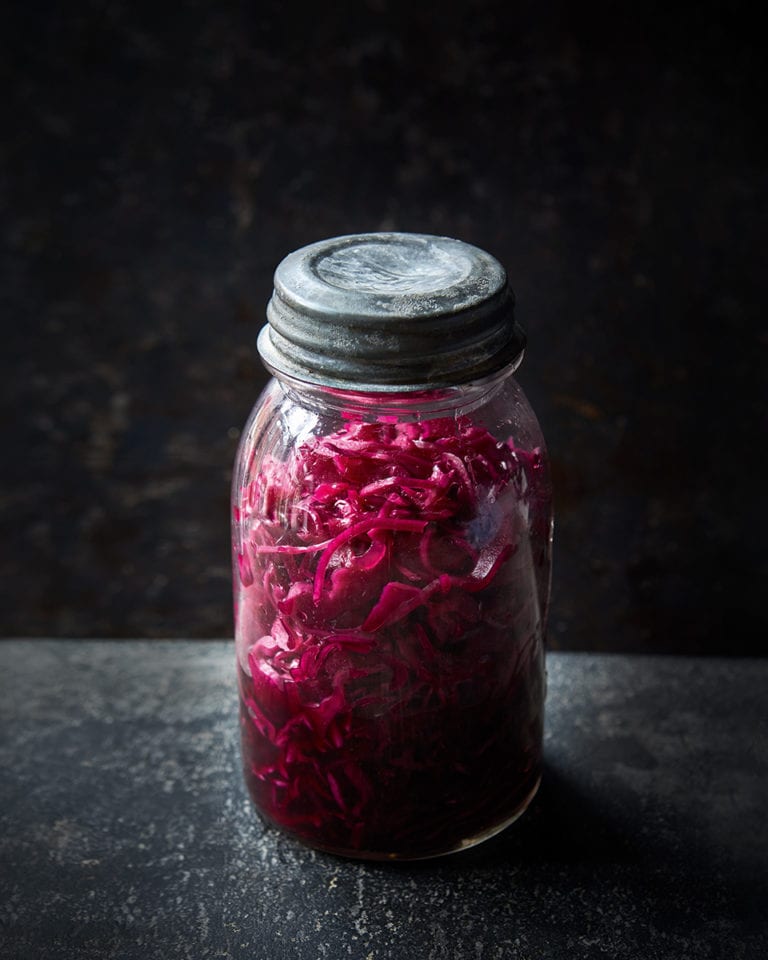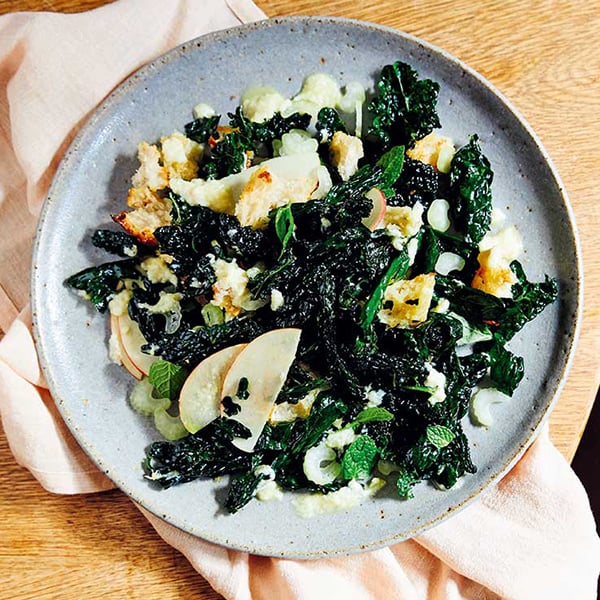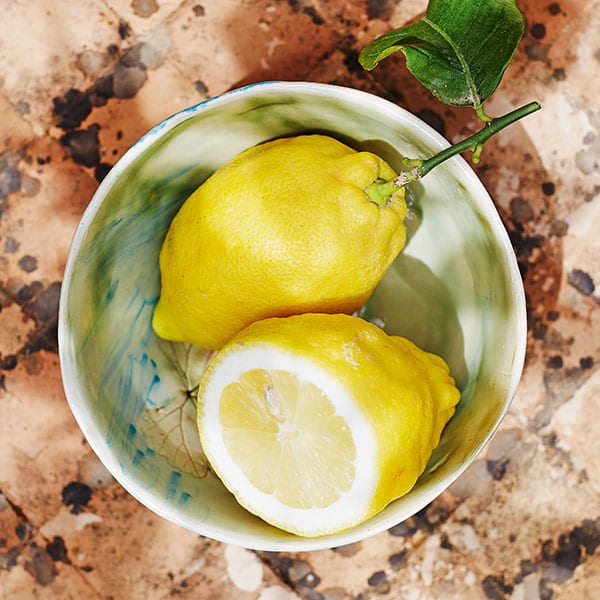Why we need to learn to love bitter food
Do you like chicory, sprouts and kale… Or hate them? There’s a genetic reason for your distaste, but there’s also growing evidence to show the importance of learning to appreciate the bitter flavours you instinctively avoid – and it could be very beneficial indeed for your health. Susan Low investigates

We cry bitter tears, and a bad experience leaves a bitter taste in our mouths. Unhappy memories are recalled with bitterness and if remorse had a taste, it would probably be reminiscent of soggy sprouts. Of the five tastes – sweet, sour, bitter, salty and umami – bitterness, for many people, is the least loved.
Yet we dismiss bitter flavours at our peril; we have a lot to lose if we put cauliflower in a corner. For one thing, research suggests that certain bitter-tasting foods, particularly leafy green vegetables (rocket, some lettuce, spinach, kale, collard greens, chicory, swiss chard…) and cruciferous vegetables, such as broccoli and cauliflower, contain phytochemicals – chemical compounds produced by plants – that appear to lower the risk of cancer and cardiovascular disease. There is also growing evidence that eating a diet rich in these veg can help slow cognitive decline.

Despite such a generous serving of good reasons to eat them, many of us turn up our noses at a plateful of greens because of their bitter taste. There’s a good reason why plants produce those bitter compounds in the first place: it’s nature’s way of putting us off. As researcher Adam Drewnowski from the University of Washington writes: “Many people don’t like to eat vegetables – and the feeling is mutual.”
Challenge your palate
Plants protect themselves against being eaten by producing a range of phytochemicals (see box) that taste bitter, acrid or astringent, which act as a red flag to the human palate and brain. London-based gastroenterologist Dr Saliha Mahmood Ahmed explains, “Human beings are programmed to be averse to bitter flavours. When we were hunter-gatherers, bitterness indicated things that could be harmful to us, so it was instinctive to dislike some bitter tastes.”
There’s a genetic component, too, says Professor Charles Spence, an experimental psychologist at the University of Oxford. “I think this is one of the few aspects that’s genuinely genetic. Newborn babies, chimpanzees and rats all stick their tongue out to make an ejection response when a bitter taste is applied to their tongue. The opposite, a liking response, occurs with sweet-tasting foods,” he says. “Intriguingly, there seem to be more compounds that elicit a bitter response than for the other tastes: salty sour, sweet, umami…”
Leaving that instinct unchallenged can have a detrimental effect on health – including gut health. As Dr Ahmed explains: “Scientists are doing a lot of work looking at prebiotic foods, which are like MiracleGro for the bowel. Prebiotics provide the fibre that the gut then breaks down and uses to produce beneficial chemicals that are beneficial to health. Many prebiotic foods are bitter: things like chicory and brassicas. If you restrict yourself from eating bitter flavours, there’s a huge quantity of prebiotic vegetables that you miss out on, but if you can improve your repertoire and eat more of those slightly bitter compounds, you’re doing wonders for your gut health.”
Sue Reeves, a registered nutritionist from the University of Roehampton, points out that eating bitter greens can be beneficial to the immune system too. “Some of the chemical compounds that produce the bitter tastes in food are known to have antioxidant activity that can help support the immune system. They’re also good for the gut because they stimulate digestion, increasing the digestive enzymes that help with nutrient absorption.”
What makes food taste bitter?
“We use one word to describe the taste but the stimuli that we sense as bitterness on the palate comes from a range of phytochemical compounds,” says Reeves. “Many compounds can make food taste bitter – and some of the molecules involved in producing bitter tastes are still unknown.”
Here are some examples:
- Polyphenols found in dark chocolate, green tea, beans and chicory
- Glucosinolates mainly found in cruciferous vegetables of the brassica family that includes brussels sprouts, cabbage, cauliflower, broccoli and kale
- Flavonoids found in grapefruit, kale, onions, parsley and red cabbage
- Catechins found in tea and broad beans
- Caffeine found in tea, coffee and chocolate
The cook’s job: making bitter better
Learning to love bitter flavours can do wonders for your cooking, too. Chef and food writer Valentina Harris, an expert on Italian food, says, “Bitter flavours have a particular quality that sharpens the senses and allows other flavours to balance out. There’s the added factor of the health benefits and versatility of these vegetables, but you need to understand about seasoning to make bitter flavours sing.”
“The secret to making bitterness palatable is to create a masterpiece of a mouthful, balancing the bitterness with sour/acid, sweetness, saltiness/umami and/or a little chilli heat.”
The secret? “It’s to create a masterpiece of a mouthful, balancing the bitterness with sour/acid, sweetness, saltiness/umami and/or a little chilli heat to make the bitterness palatable, rather than so fierce that it overwhelms the dish or the diner,” says Harris.

For those who really can’t abide bitter flavours, there is hope, says Dr Mahmood. Her advice is to take it slowly. “As a cook, my advice would be to challenge yourself and not restrict yourself; try not to think, ‘ooh, that’s bitter, I’m not going to try it.’ One trick is to add a bit of sweetness to the bitter as that pairing is utterly delicious. It’s also useful to move from subconscious eating to conscious eating: to make a conscious decision to incorporate bitter and develop a tolerance for it.”
Changing tastes
There are signs that appreciation of bitter tastes is on the rise. The fact that sweatshirts emblazoned with the single word ‘Kale’ were ever worn by millennials is just one clue. Another is the growing interest in craft beer. Some brewers tend to fetishise about the amount, provenance and bitterness of the hops used to flavour their beers. (The brewing industry uses a scale, the International Bitterness Unit, to indicate how bitter a beer is likely to taste.)
Chocolate is sold with an ever-higher cocoa content, and supermarket Waitrose reported that sales of the bitter Italian aperitif Aperol, used to make the bright-orange sundowner classic the Aperol Spritz, rose 148 per cent year-on-year in 2021. Sales of vermouth, made with tongue-torturingly bitter wormwood, are on the rise, too.
So, there are signs that bitter tastes are on the road to redemption – something for which our guts will thank us. There’s a reason to love that cauliflower…
Subscribe to our magazine
Food stories, skills and tested recipes, straight to your door... Enjoy 5 issues for just £5 with our special introductory offer.
Subscribe
Unleash your inner chef
Looking for inspiration? Receive the latest recipes with our newsletter